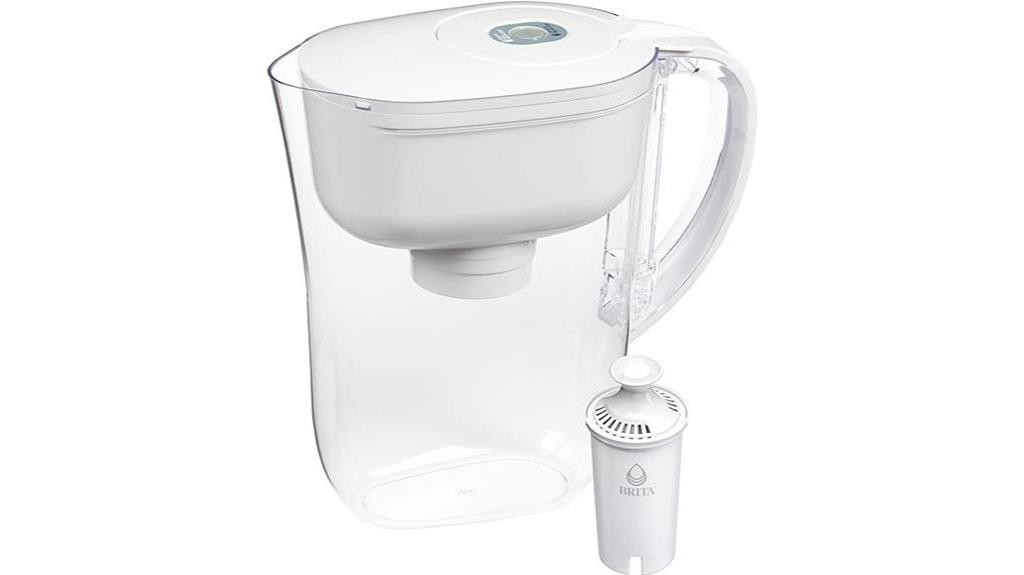Are you concerned about the quality of your drinking water? Reverse osmosis (RO) systems are a popular option for water treatment, but they require regular maintenance to function properly. Neglecting maintenance can lead to poor water quality and costly repairs. By maintaining your RO system, you can ensure access to clean, safe water for years to come.
In this article, we will provide you with the knowledge you need to maintain your RO system for optimum performance. We will discuss the basics of RO maintenance, including when to replace filters and membranes, how to assess performance, and tips for extending the life of your system.
Whether you have an existing RO system or are considering installing one, this article will help you understand the importance of proper maintenance and how to keep your water clean and safe.
Key Takeaways
– Regular maintenance is crucial for the proper functioning and longevity of a reverse osmosis water treatment system.
– Filters and membranes need to be replaced at regular intervals to prevent degradation of water quality and reduced water production.
– Checking the flow rate and monitoring TDS concentration, filter service date, and brine quality/volume can indicate the need for maintenance.
– Neglecting maintenance can result in costly repairs or the need to replace the entire system.
RO Maintenance Basics
To ensure your reverse osmosis water treatment system functions properly and provides clean drinking water, you need to know the basics of RO maintenance. This includes changing filters, cleaning membranes, and servicing the system annually.
One of the most important things to do is to troubleshoot your RO system regularly. This means checking the flow rate, TDS concentration, and brine quality/volume to assess the performance of the RO membrane. If you notice a decrease in flow rate or an increase in TDS concentration, it may be time to change the RO membrane.
Another common mistake in RO maintenance is neglecting to change filters regularly. Filters should be replaced every 6-12 months, depending on daily water usage and the quality of the water source. Failure to change filters can result in debris accumulation and decreased efficiency, which can lead to costly repairs or even the need to replace the entire system.
By staying up-to-date with regular maintenance, you can extend the life of your RO system and ensure access to clean, safe water all the time.
Filter Replacement Schedule
Make sure you replace your filters every 6-12 months to ensure proper function and prevent degradation of the RO membrane. Filters accumulate debris and lose efficiency over time if not replaced routinely. This can lead to poor water quality and reduced water production.
By keeping up with filter replacements, you can prolong the lifespan of your RO system and ensure that it continues providing clean, safe water for your household.
To determine the frequency of filter replacement, you can perform a frequency assessment based on your daily water usage, water quality, and other factors that may affect the efficiency of your RO system. High quality water filters and routine pre-filter cleaning can also help extend the life of your RO membrane.
By following a regular filter replacement schedule and performing routine maintenance, you can save money in the long run and avoid costly repairs or replacements.
RO Membrane Care
If you neglect routine servicing of the RO membrane, it can clog or become damaged, resulting in costly repairs or replacements. To prevent membrane damage, it’s crucial to clean and sanitize the RO membrane regularly. This can be done by following the manufacturer’s guidelines or seeking professional assistance.
Cleaning the RO membrane involves removing any debris or buildup that may have accumulated on the surface. This can be done by flushing the membrane with a cleaning solution, which will dissolve any contaminants and prevent them from clogging the membrane. It’s important to use the right cleaning solution and follow the instructions carefully to avoid damaging the membrane.
By regularly cleaning and sanitizing the RO membrane, you can extend its lifespan and ensure that your water treatment system continues to provide clean and safe water for your household.
Professional Maintenance Services
You can save money and ensure proper functioning of your reverse osmosis water treatment system by hiring a professional company to perform routine maintenance services. Outsourcing your RO system maintenance has several benefits.
First, professionals have the expertise and tools to properly clean and service your system, ensuring that it lasts longer and produces high-quality water. Second, they can identify any potential problems before they become costly repairs. Third, they can provide recommendations on how to improve your water quality and extend the life of your system.
While professional maintenance services are recommended, there are also some DIY tips to keep your RO system in good condition. First, make sure to check the filters regularly and replace them as needed. Second, clean the pre-filters to remove any sediment or debris that can clog the system. Third, monitor your water quality and usage to determine when your system needs to be serviced.
By following these tips and outsourcing maintenance to a professional company, you can ensure that your RO system provides clean and safe water for years to come.
Conclusion
So, there you have it: maintaining your RO system is crucial for clean and safe drinking water. By following the basic maintenance guidelines, including replacing filters and taking care of the RO membrane, you can ensure your system functions properly and provides high-quality water for years to come.
It’s also important to consider professional maintenance services, such as an annual check-up from a certified technician. By investing in regular maintenance, you can prevent costly repairs and ensure the longevity of your RO system.
Remember, clean water is essential for a healthy lifestyle, so don’t neglect the maintenance of your RO system.




